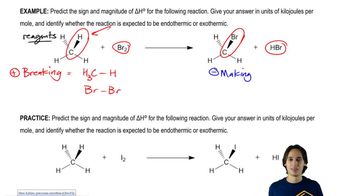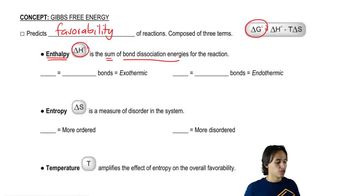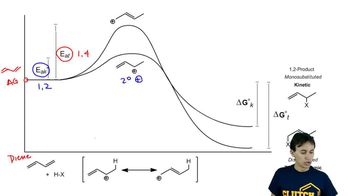a. Using the BDEs in Table 4-2 (page 167), compute the value of ΔH° for each step in the iodination of methane.
b. Compute the overall value of ΔH° for iodination.

 Verified step by step guidance
Verified step by step guidance Verified video answer for a similar problem:
Verified video answer for a similar problem:



 4:09m
4:09mMaster How to calculate enthalpy using bond dissociation energies. with a bite sized video explanation from Johnny
Start learning